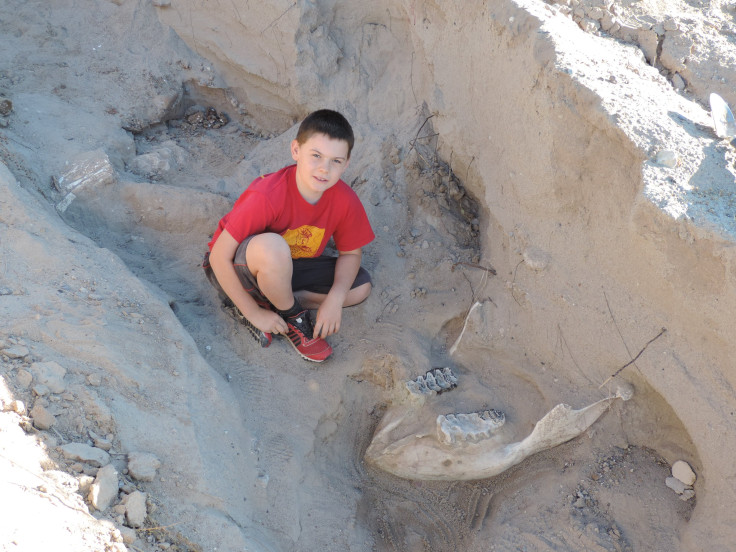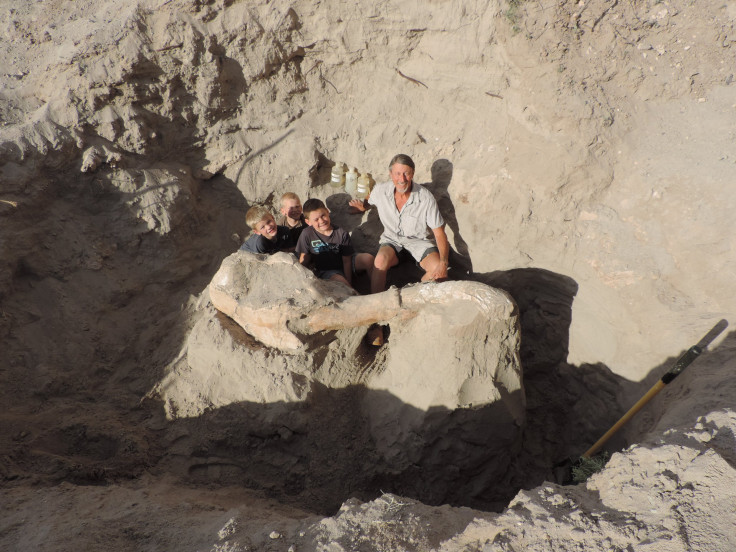New Mexico Boy Discovers An Ancient Stegomastodon Fossil By Tripping Over It

A nine-year-old boy from New Mexico physically stumbled upon a rare fossil last November while out for a walk with his parents and brothers. When Jude Sparks (now 10) initially looked at what had tripped him up he and his family didn’t quite know what to make of it, according to the New York Times. The family decided to take some photos of their finding and did some research when they got home.
They ended up contacting Professor Peter Houde at New Mexico State University about the unique find after they saw a video of him on YouTube talking about a similar fossil. The fossil he was discussing in the video resembled an elephant, with large tusks and a massive skull, just like what Jude had tripped over. They later discovered that Jude had actually fallen right at the jaw of a million-year-old Stegomastodon fossil.
Read: Dinosaur Evolution: Skeleton Shows Diversity Of Marine Reptiles
When Houde got the email from the Sparks family he recognized the fossil quickly, reported the Times. The finding is unusual, probably only the second complete skull ever found in the state of New Mexico, reported NMSU. The Stegomastodon is likely 1.2 million years old, Houde estimates. While its name sounds like that of a dinosaur, it’s actually a relative of elephants. The dinosaurs walked the Earth millions of years before this elephant-like creature did, the most recent dinos died out 65 million years ago.
But Jude’s discovery is still a rare fossil, even if it doesn’t belong to a T-Rex or a Stegosaurus. Jude and his family were able to join Professor Houde in May to help uncover the skull. Part of the reason it was delayed for months was that the skull originally sat on private property and it took some time to get the chemicals needed to preserve the bones, reported NMSU. The exact location where the fossil was discovered will be kept under wraps, at the landowner's request.
Read: What Ice Age Fossils Can Teach Us About Climate Change Today

While the large fossil looks strong, Houde explained that it’s actually fairly fragile. The actual skull is thin, and the upper part of the skull is partially hollow to lighten the load and the weight on the Stegomastodon's neck. This is why the special chemicals were needed and why the extraction process took a week, not to mention the fine cleaning afterwards, wrote NMS U. Fully reconstructing the skull, jaw and tusks will take years but once it’s finished the Jude’s find will go on display.
Jude told the Times that when he was younger he went through a dino-loving phase, much like other kids do. But finding the Stegomastodon hes rekindled his interest in fossils. Houde hopes that the fossil will go on display at the University, somewhere close to Jude where he can show his friends what he found one day.
© Copyright IBTimes 2024. All rights reserved.





















